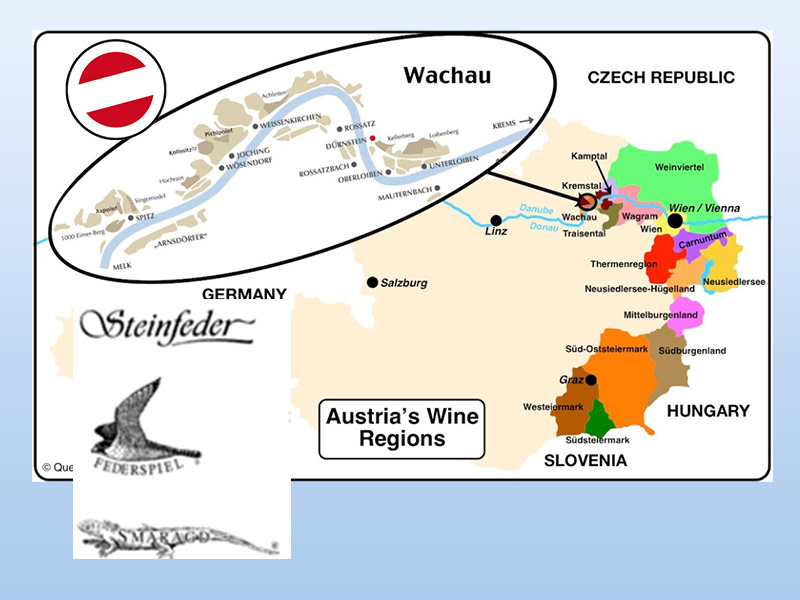Understanding Austrian Wine Labels
- Posted on
- Posted in Austria, Blaufrankisch, Gruner Veltliner, pinot gris/pinot grigio, pinot noir, Riesling, Rotgipfler, zweigelt
- 0

The winery’s location will determine under what wine laws it may choose to participate. Wine laws are meant to strengthen the branding relationship between winery and consumer, by informing the customer what level of quality, approved varietal used, and production methods were imposed to produce a bottle of wine. Austria imposed a three-tiered quality level system:
- Wein—the lowest quality level indicates wine made in Austria
- Landwein—Wine with Protected Geographic Indication (PGI)
- Qualitatswein—Wine with Protected Designation of Origin (PDO). These wines must undergo a government inspection to ensure quality standards. A government inspection number will be stated on the label. Sometimes you will also see the cap have red, white, and red stripes.
Following the German method, the Qualitatswein level is further broken down into:
- Klassic—wine with a vintage declared, and showing varietal character.
- Reserve—dry wines with a minim of 13 percent ABV, typically released after standard wines.
Austria also follows the German method of labeling, known as the Pradikatswein system, which indicates the must weight at time of harvest. The must is the juice, the skins, the pulp, and anything else that goes into the tank for fermentation. Sometimes, but not always, the denser the must, the sweeter the wine produced. The categories from light to dense include (skipping the Kabinett), Spatlese, Auslese, Beerenausiese, Eiswein, and Trockenbeerenauslese (TBA).
As of 2002, Austria amended their appellation system to allow wineries to add DAC (Districts Austriae Controllatus) in order to promote regionality. The parallel in other countries include France’s AOC (Appellation d'origine contrôlée) or Italy’s DOCG (Denominazione di Origine Controllata e Garantita). Currently there are 15 DAC wine-growing regions in Austria. DAC has a quality hierarchy that distinguishes among three levels: Gebietswein for regional, Ortswein for village, and Riedenwein for single-vineyard wines.
Another classification to be aware of in the Wachau region was initiated by the Vinea Wachau Wine Association, founded in 1983. The goal of this association was to promote authenticity, individuality, and craft. The bare minimum to qualify includes hand harvesting, no capitalization (adding sugar to the juice to make the wine capable of fermenting or otherwise), ferment to dry, and no wood aging. The following are the three levels of quality from lowest to highest:
- Steinfeder—with the symbol of grass; requires the wine to be produced in a light style, with a max AVB of 11.5 percent, and is meant to be enjoyed young, as an aperitif.
- Federspiel—with the symbol of a falcon; requires the wine to be produced with delicate aromas, with an ABV between 11.5-12.5 percent, and is meant to be enjoyed, ideally, with food.
- Smaragd—with the symbol of an indigenous green lizard, requires wine to be produce with intensity and complexity, with a minimum ABV of 12.5 percent, and will often benefit from ageing.

Comments
Be the first to comment...